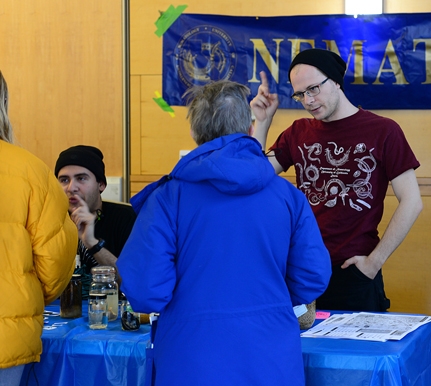
It's true.
The U.S. Department of Agriculture's (USDA) Agricultural Research Service (ARS) and Pheronym, a company in Alachua, Fla., that develops and produces nematode pheromones, have announced plans to send nematodes (small round worms) to the International Space Station as early as this year.
The news, announced Feb. 20 on the ARS website, may have been overlooked by many ("What's a nematode?") but not by nematologists and other scientists.
The headline: "Starship Nematode."
"The mission represents a look into the future where food crops will be grown in space," according to writer Sharon Dunham. "The goal is to develop environmentally friendly methods for space travel that are not harmful to humans," she wrote. "This will be the first biological control experiment in space."
She went on to relate that experiment will "test the movement and infection behavior of beneficial nematodes (also called entomopathogenic nematodes or EPNs) that control a wide array of insect pests in agriculture." ARS research entomologist, David Shapiro-Ilan at the Fruit and Tree Nut Research Station in Byron, Ga., is co-project director of the experiment.
Nematodes, Dunham said, are "environmentally friendly alternatives to broad spectrum chemical insecticides and are also safe to humans and other nontarget organisms. One fascinating aspect of the EPN biology is that the nematodes kill their insect pest hosts with the aid of symbiotic bacteria that are carried in the nematode gut."
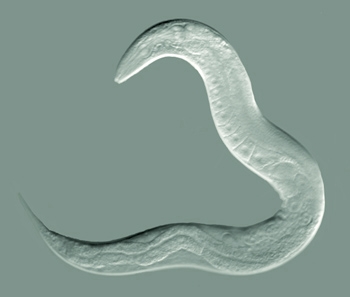
Nathan Augustus Cobb (1859-1932), the "father of nematology in the United States," had this to say about a world without nematodes.
"In short, if all the matter in the universe except the nematodes were swept away, our world would still be dimly recognizable, and if, as disembodied spirits, we could then investigate it, we should find its mountains, hills, vales, rivers, lakes, and oceans represented by a film of nematodes. The location of towns would be decipherable, since for every massing of human beings, there would be a corresponding massing of certain nematodes. Trees would still stand in ghostly rows representing our streets and highways. The location of the various plants and animals would still be decipherable, and, had we sufficient knowledge, in many cases even their species could be determined by an examination of their erstwhile nematode parasites."
In fact, nematodes seem totally destructible.
Attached Images:
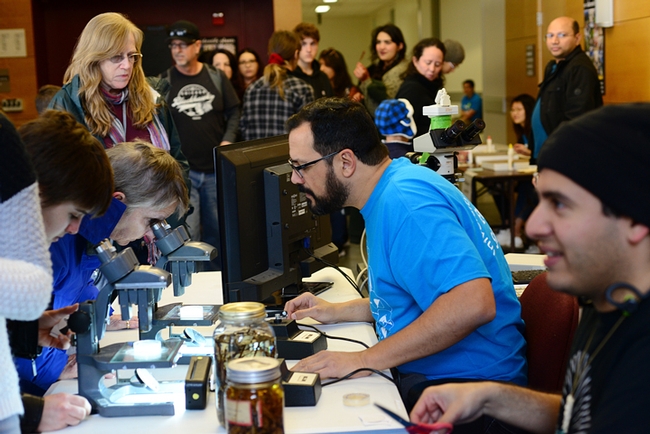
UC Davis doctoral student and nematologist Christopher Pagan shows nematode specimens to visitors at the UC Davis Biodiversity Museum Day. (Photo by Kathy Keatley Garvey)
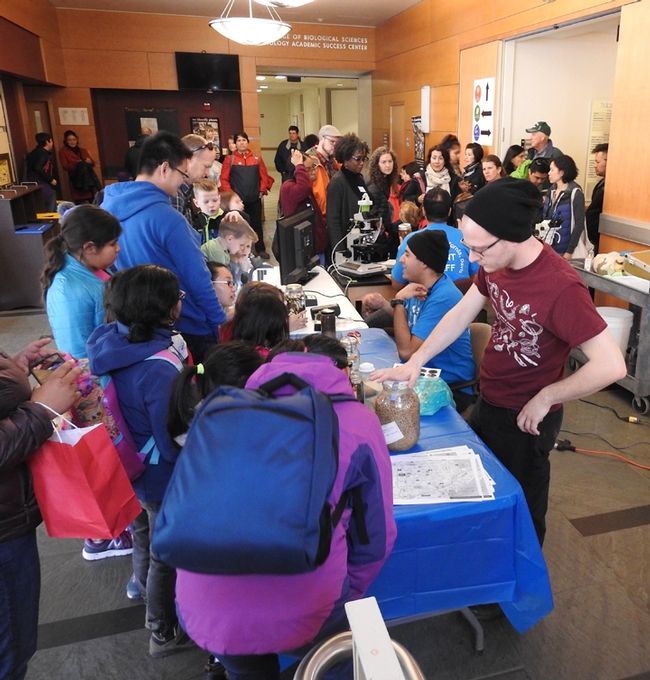
UC Davis doctoral student and nematologist Corwin Parker answers questions from the public at the UC Davis Biodiversity Museum Day. (Photo by Kathy Keatley Garvey)
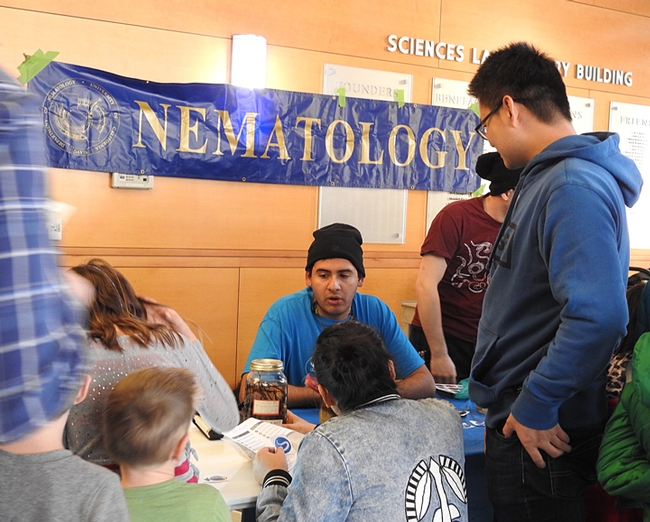
Entomologist Diego Rivera, an undergraduate student at UC Davis, chats with the crowd in the Sciences Laboratory Building. (Photo by Kathy Keatley Garvey)